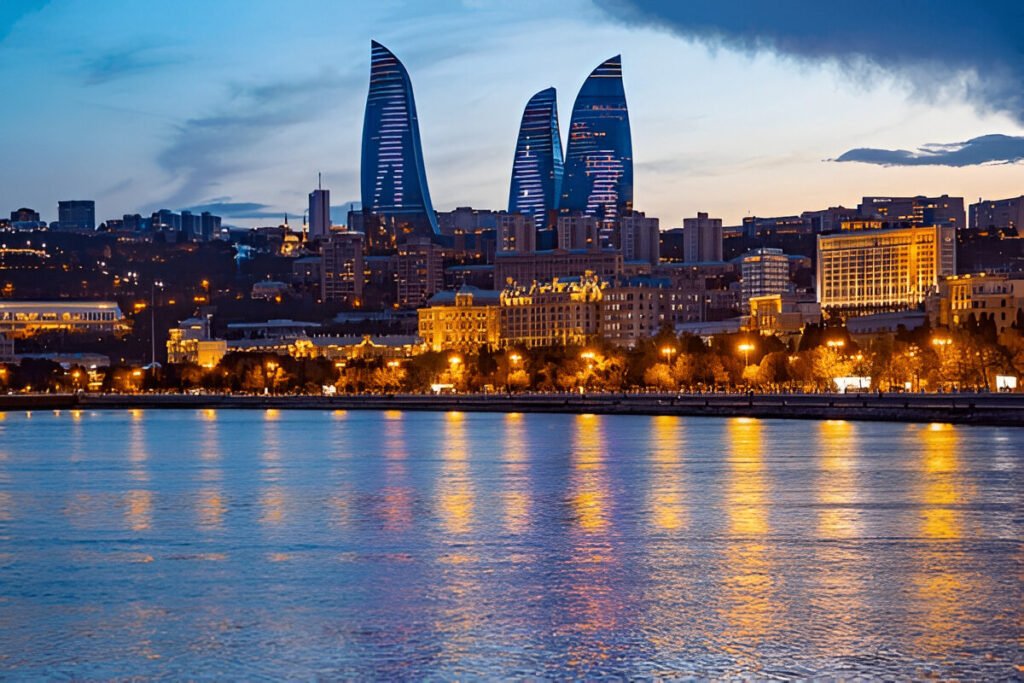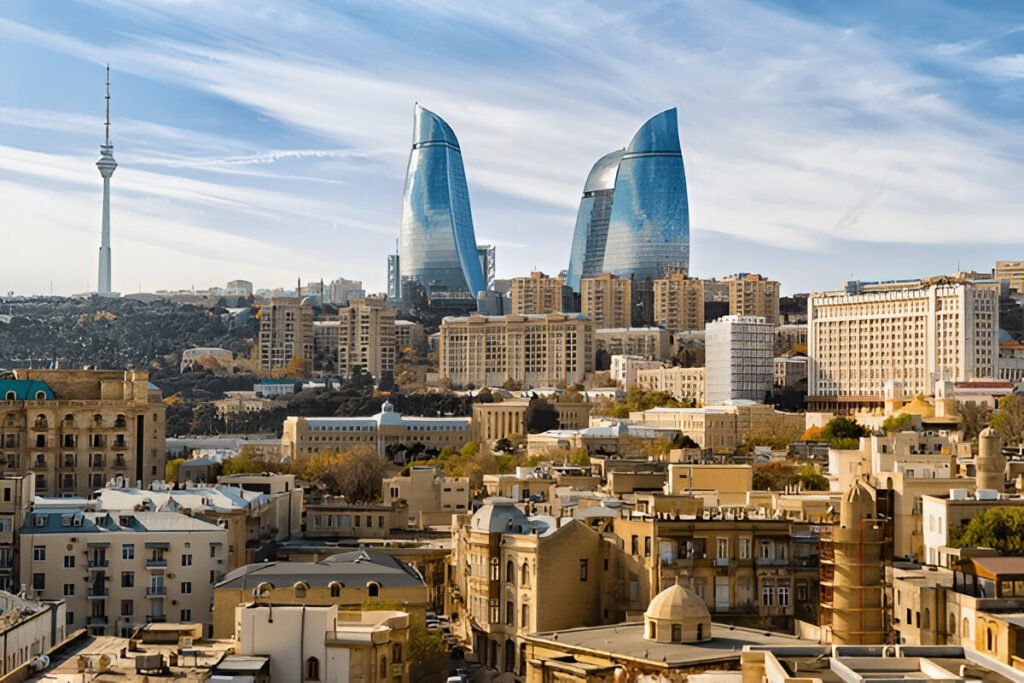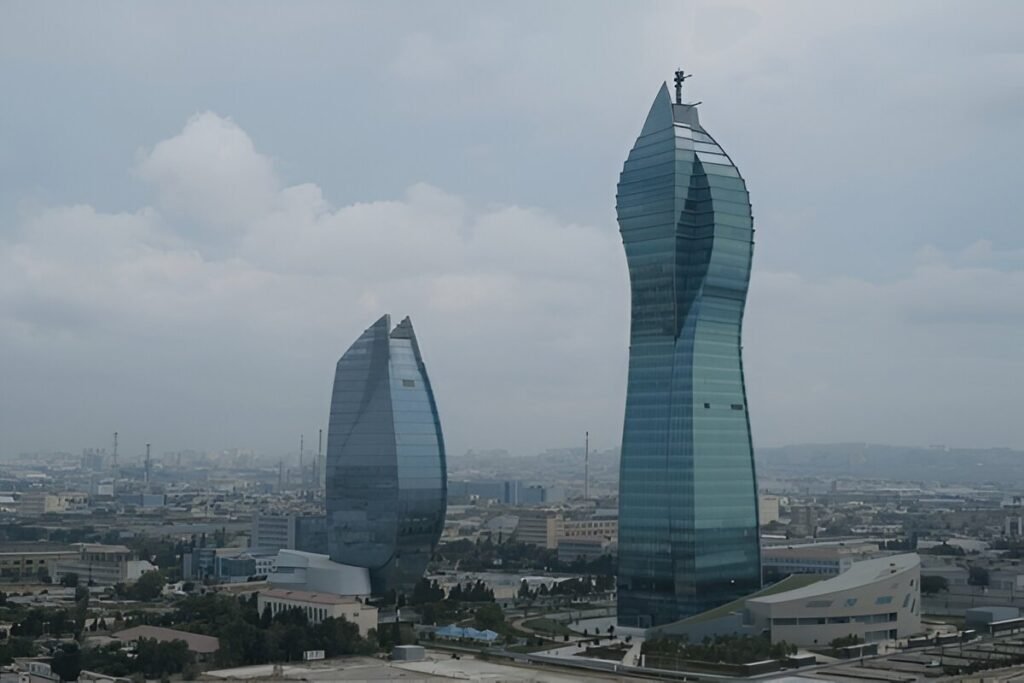Introduction
Azerbaijan’s landscape is a stunning blend of the ancient and the modern, where the rich cultural heritage of the past coexists harmoniously with the cutting-edge designs of today. Over the past few decades, the country has witnessed a dramatic transformation in its architectural landscape, particularly in its capital city, Baku. With its ambitious urban development projects and the rise of iconic structures, Azerbaijan has become a showcase for contemporary architecture in the Caucasus and beyond. Among these modern architectural marvels are the Heydar Aliyev Center and the SOCAR Tower, both of which represent the country’s commitment to innovation, sustainability, and artistic expression.
In this article, we will explore Azerbaijan’s journey into modern architecture, focusing on two of the most prominent and innovative buildings in Baku. Through these structures, we will also gain insight into the role of architecture in shaping Azerbaijan’s national identity and global image.
The Heydar Aliyev Center: A Symbol of Innovation and Fluidity

One of the most recognizable and iconic buildings in Azerbaijan is the Heydar Aliyev Center, a masterpiece designed by world-renowned architect Zaha Hadid. Completed in 2012, the Heydar Aliyev Center is a striking example of fluid architecture, which seeks to create seamless, flowing forms that transcend traditional architectural boundaries. The design of the building is inspired by natural landscapes and organic shapes, featuring smooth, undulating curves that appear to rise and fall like waves.
The Heydar Aliyev Center is named after Heydar Aliyev, the third president of Azerbaijan, who played a significant role in the country’s development and modernization. The building itself stands as a tribute to his legacy, symbolizing Azerbaijan’s forward-thinking vision and aspirations for the future. However, the design also reflects a sense of Azerbaijani identity, as the flowing curves are meant to evoke the rolling hills, valleys, and natural topography of the country.
The Heydar Aliyev Center is not just an architectural feat; it also serves as a cultural center, hosting a variety of exhibitions, events, and performances that highlight Azerbaijan’s history, art, and culture. The building’s sweeping, uninterrupted form challenges traditional architectural styles, pushing the boundaries of design while simultaneously embracing Azerbaijan’s rich cultural heritage. With its innovative design and multifunctional use, the Heydar Aliyev Center has become a symbol of Azerbaijan’s aspirations on the world stage.
The SOCAR Tower: A Modern Skyscraper Symbolizing Progress
Another prominent example of Azerbaijan’s architectural evolution is the SOCAR Tower, located in the heart of Baku’s business district. SOCAR, short for the State Oil Company of Azerbaijan Republic, is the country’s national oil company, and the SOCAR Tower represents the company’s leadership in the global energy sector. Completed in 2016, the tower’s design is sleek, modern, and functional, symbolizing the strength and power of Azerbaijan’s energy industry.
The SOCAR Tower stands out with its innovative design, which combines elements of modern architecture with sustainable building practices. The tower rises 209 meters and consists of 35 floors, making it one of the tallest buildings in Baku. Its unique twisted shape, which spirals upwards, is designed to minimize the effects of wind resistance and optimize energy efficiency, showcasing the country’s commitment to sustainable development.
The building’s exterior is clad in reflective glass panels, which give it a futuristic look, while the interior is designed with cutting-edge technology and materials to provide a comfortable and productive work environment. The SOCAR Tower is not only a symbol of Azerbaijan’s economic prosperity but also a testament to the country’s growing role as a key player in the global energy market.
Baku’s Skyline: The Intersection of Modern and Traditional

Baku’s skyline is rapidly changing, with new skyscrapers, high-rise buildings, and modern developments shaping the city’s appearance. As a result of Azerbaijan’s economic growth, especially in the oil and gas sectors, the city has become a hub for international business and innovation. The architectural landscape of Baku is a direct reflection of the country’s ambition to modernize and establish itself as a global player in the 21st century.
However, Baku’s skyline is not entirely dominated by modern buildings. The city’s historic architecture, such as the Maiden Tower, the Palace of the Shirvanshahs, and the Old City (Icherisheher), stands in striking contrast to the sleek lines of modern skyscrapers. This fusion of the old and the new is a key characteristic of Baku’s identity, as it preserves the city’s deep-rooted cultural heritage while embracing the future.
The Flame Towers, another iconic feature of Baku’s skyline, are a striking example of how modern design can be used to represent a nation’s identity. These three towers, which resemble the shape of flames, are not only a technological marvel but also a symbol of Azerbaijan’s heritage, as fire has long been a significant cultural and spiritual symbol in the country. The Flame Towers are an excellent example of how modern architecture can be inspired by traditional elements, reflecting Azerbaijan’s unique position at the crossroads of Europe and Asia.
The Role of Architecture in Shaping Azerbaijan’s National Identity

Azerbaijan’s recent architectural developments are a reflection of the country’s aspirations to position itself as a modern, forward-thinking nation on the world stage. The country’s commitment to innovation and modernity is evident in the designs of iconic buildings like the Heydar Aliyev Center and the SOCAR Tower, which serve as symbols of progress, sustainability, and economic strength.
Moreover, modern architecture in Azerbaijan is deeply intertwined with the country’s rich history and culture. For example, the Heydar Aliyev Center incorporates elements of Azerbaijan’s traditional design and natural beauty, while the Flame Towers incorporate a symbol of the country’s ancient fire-worshipping traditions. These buildings not only represent Azerbaijan’s commitment to the future but also serve as reminders of the country’s deep-rooted cultural identity.
Azerbaijan’s modern architectural designs are not only about aesthetics or technological advancements—they are also about projecting a new image to the world. The Heydar Aliyev Center, the SOCAR Tower, and other notable buildings are symbols of Azerbaijan’s growing international influence, particularly in sectors like energy, business, and culture. These architectural wonders also contribute to the country’s tourism industry, as travelers from around the world come to witness the fusion of tradition and modernity in Baku’s skyline.
Sustainability in Modern Azerbaijani Architecture
As Azerbaijan continues to grow and develop, sustainability has become a key consideration in its architectural designs. Both the Heydar Aliyev Center and the SOCAR Tower are excellent examples of how modern buildings can incorporate environmentally friendly and energy-efficient features. The use of natural light, advanced energy-saving technologies, and sustainable materials in these buildings highlights Azerbaijan’s commitment to balancing urban development with environmental responsibility.
Baku’s modern buildings are also designed to withstand the challenges of climate change and urbanization. The city’s growing demand for energy-efficient structures and smart technologies has led to the development of green buildings that prioritize sustainability and minimize their environmental impact.
Conclusion:
Azerbaijan’s modern architecture, exemplified by buildings such as the Heydar Aliyev Center and SOCAR Tower, represents the country’s dynamic growth, cultural richness, and ambitious vision for the future. These architectural masterpieces stand as symbols of Azerbaijan’s commitment to innovation, progress, and sustainability, while also embracing the nation’s deep cultural heritage.
Baku’s skyline is a unique blend of the old and the new, where traditional architectural elements are seamlessly integrated with cutting-edge designs. This fusion creates a cityscape that reflects Azerbaijan’s aspirations on the global stage and its vision for a bright, sustainable future.
As Azerbaijan continues to invest in modern architecture and urban development, its buildings will remain a testament to the country’s evolution into a 21st-century powerhouse, where progress, culture, and sustainability are harmoniously intertwined. Whether it is through the fluid, organic forms of the Heydar Aliyev Center or the futuristic lines of the SOCAR Tower, Azerbaijan’s modern architecture tells a powerful story of a nation on the rise.












